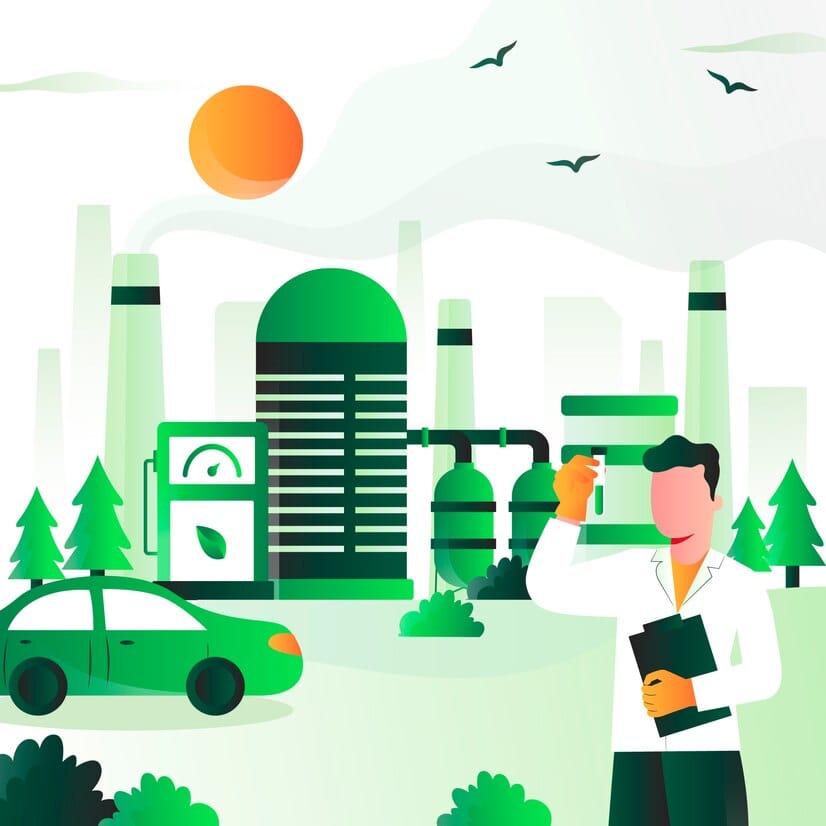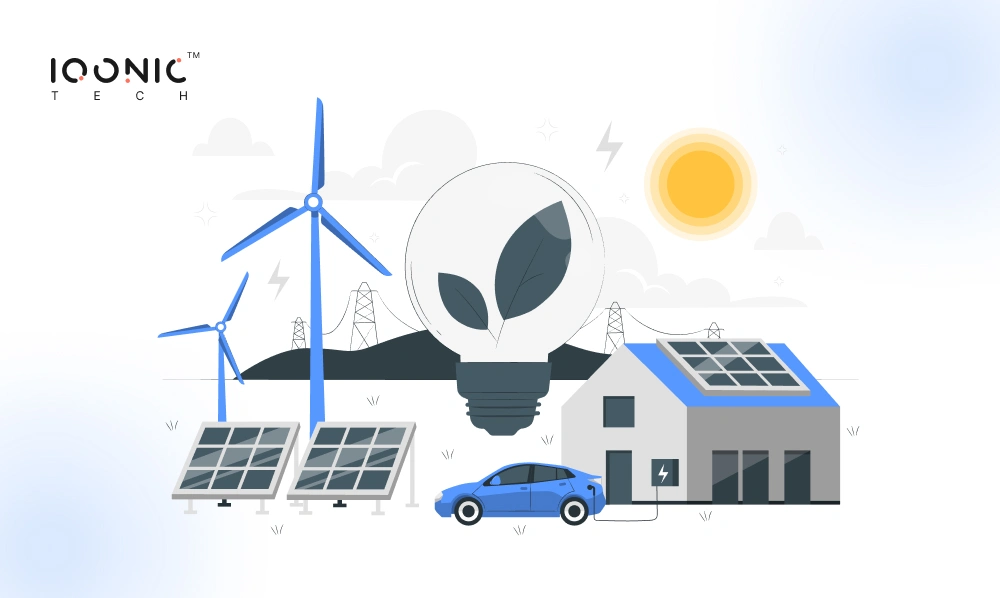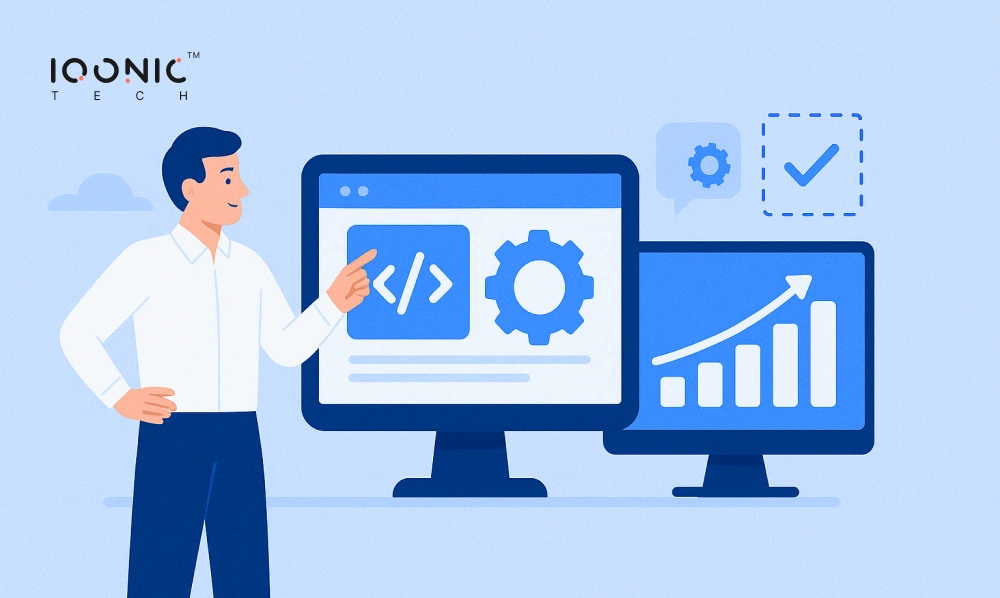Imagine a world where energy is abundant, sustainable, and nearly free of environmental impact. With the rapid advancements in green energy technology, this future is becoming more attainable than ever before. As global concerns about climate change, energy security, and fossil fuel depletion grow, industries and governments are turning to clean energy solutions. But what are the latest trends driving this transformation, and how can businesses leverage these innovations?
In this blog, we will explore the most promising green energy technologies, their impact across various industries, key challenges, and future outlooks.
Understanding Green Energy Tech and Its Significance

Green energy technology refers to innovations that generate power while minimizing environmental harm. These technologies harness renewable resources such as solar, wind, hydro, and bioenergy to reduce dependence on fossil fuels. The urgency of transitioning to green energy is underscored by climate change concerns, policy regulations, and the growing demand for sustainable business practices.
The energy sector is at the forefront of change, with companies investing in advanced renewable energy solutions to cut emissions and enhance efficiency. From smart grids to energy storage systems, the shift towards cleaner energy is reshaping industries globally. Businesses that fail to adapt risk falling behind as governments introduce stringent sustainability policies.
Real-World Impact of Green Energy Technologies
The adoption of green energy is revolutionizing industries. Companies investing in renewable energy solutions not only reduce their carbon footprint but also experience significant cost savings in the long run.
1. Corporate Sustainability Practices
Tech giants such as Google and Amazon are leading the shift by committing to 100% renewable energy. By sourcing power from solar farms and wind projects, businesses are setting new sustainability benchmarks.
2. Smart Cities and Infrastructure
Countries worldwide are incorporating green energy in urban infrastructures, including solar-powered streetlights, energy-efficient transport systems, and eco-friendly buildings. Smart grids help manage electricity demand, improving efficiency and sustainability.
3. Manufacturing and Industrial Sectors
Factories integrating renewable energy solutions, such as solar panels and hydrogen-powered systems, are cutting costs while meeting environmental regulations.Green hydrogen holds strong potential for heavy industries, providing a cleaner, low-emission substitute for traditional fossil fuels.
Key Challenges and Misconceptions
Despite the momentum, several challenges hinder mass adoption of green energy technologies.
a. Intermittency Issues
Solar and wind power generation depend on weather conditions, creating supply fluctuations. However, advancements in energy storage (like lithium-ion and solid-state batteries) are addressing this limitation.
b. High Initial Investment Costs
Though renewable energy projects require substantial upfront costs, decreasing technology prices and government incentives are making adoption viable in the long term.
c. Grid Integration Challenges
Many existing energy grids are not designed for decentralized renewable energy sources. Upgrading infrastructure with smart grid technologies is crucial but requires significant investment.
d. Limited Public Awareness
Misconceptions about renewable energy effectiveness and adoption costs persist. Educating businesses and homeowners about long-term savings and environmental benefits is essential.
Practical Solutions and Best Practices for Implementing Green Energy
Organizations looking to transition to green energy should adopt practical strategies to maximize benefits while ensuring a smooth transition.
i. Leverage Government Incentives
Many governments offer tax credits, subsidies, and grants for companies investing in renewables, making it financially attractive to switch.
ii. Invest in Energy Storage Systems
Advanced battery storage solutions allow businesses to store surplus energy generated through renewables, ensuring a stable power supply during low-production periods.
iii. Implement Energy-Efficient Technologies
Combining renewables with AI-driven energy management systems helps optimize consumption, cutting operational costs while reducing waste.
iv. Adopt Corporate Sustainability Policies
Setting measurable carbon reduction goals and integrating green energy initiatives builds brand reputation while attracting eco-conscious investors.
Emerging Trends and Future Innovations in Green Energy
The green energy landscape continues to evolve with groundbreaking innovations.
A. Green Hydrogen Technology
Hydrogen as a clean fuel is gaining traction, especially in industries like shipping and steel manufacturing. Innovations in electrolysis technology are helping reduce the cost of hydrogen production, making it a more viable energy source.
B. Next-Generation Solar Panels

Innovations such as perovskite solar cells and floating solar farms are increasing efficiency, opening new possibilities for widespread renewable adoption.
C. Energy Blockchain and Decentralized Grids
Blockchain technology is enabling peer-to-peer energy trading, allowing small renewable energy producers to sell excess power directly to consumers.
D. Carbon Capture and Storage (CCS)

Technologies that capture carbon emissions before they enter the atmosphere are being integrated into power plants and industrial facilities, reducing environmental impact.
E. Smart Grids and AI Integration
AI and machine learning are being used to optimize grid performance, predicting energy demand and improving supply efficiency.
Additional Resources for Further Learning
For those looking to deepen their understanding of green energy technologies, the following resources provide valuable insights:
- Insights from the International Energy Agency (IEA) highlight current trends and developments in the renewable energy landscape.
- Research papers on advancements in battery storage technology
- Industry whitepapers on green hydrogen and its applications
Government websites with details on renewable energy incentives and policies
Conclusion
The future of energy is green, and businesses that embrace these innovations will gain a competitive edge. As technology continues to evolve, renewable energy sources will become more efficient, affordable, and widespread. Organizations that invest in sustainable energy solutions today are not only future-proofing their operations but also contributing to a cleaner and more sustainable planet.
By staying informed about emerging trends and leveraging government incentives, companies can transition smoothly into a greener future. The question now is, how will your organization embrace the power of green energy?






